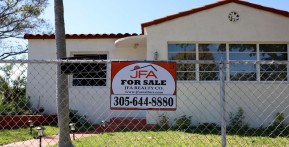If mortgage lending conditions returned to normalcy, it would boost home sales and help create new jobs, a recent report by the National Association of Realtors showed.
“Sensible lending standards would permit 500,000 to 700,000 additional home sales in the coming year,” Lawrence Yun, NAR chief economist, said in a statement. “The economic activity created through these additional home sales would add 250,000 to 350,000 jobs in related trades and services almost immediately, and without a cost impact.”
The report says that though financial industry profits are back to pre-recession levels, lending standards are still tight.
“There is an unnecessarily high level of risk aversion among mortgage lenders and regulators, although many are sitting on large volumes of cash which could go a long way toward speeding our economic recovery. A loosening of the overly restrictive lending standards is very much in order,” Yun said.
Quoting the survey, he pointed out that in August, 53 percent of loans went to borrowers with credit scores above 740. “In comparison, only 41 percent of loans backed by Fannie Mae had FICO scores above 740 during the 2001 to 2004 time period, while 43 percent of Freddie Mac-backed loans were above 740,” the report showed.
A similarly pattern is noted for Federal Housing Administration (FHA) loans, too. A prime loan is one which has a score of 660 and above, but the report shows that the average score for denied applications on FHA loans was 669 in May 2012. This is well above the 656 average for loans actually originated in 2001, according to the NAR report.
Depicting the impact of risky mortgages, the report showed that 12-month default rates peaked in 2007 at three percent for Fannie Mae loans and 2.5 percent for Freddie Mac loans.
However, Yun points out that the home buyers of recent years have been successful as the 12-month default rates have been low. Fannie Mae default rates averaged 0.2 percent while Freddie Mac’s averaged 0.1 percent since 2009. Taking into consideration higher unemployment rates during this time, these rates are low, Yun pointed out.







![The Colonial-Style House from “Life As We Know It” in Atlanta [PHOTOS]](https://data.realtytoday.com/data/thumbs/full/4322/289/147/50/20/the-colonial-style-house-from-life-as-we-know-it-in-atlanta-photos.jpg)





